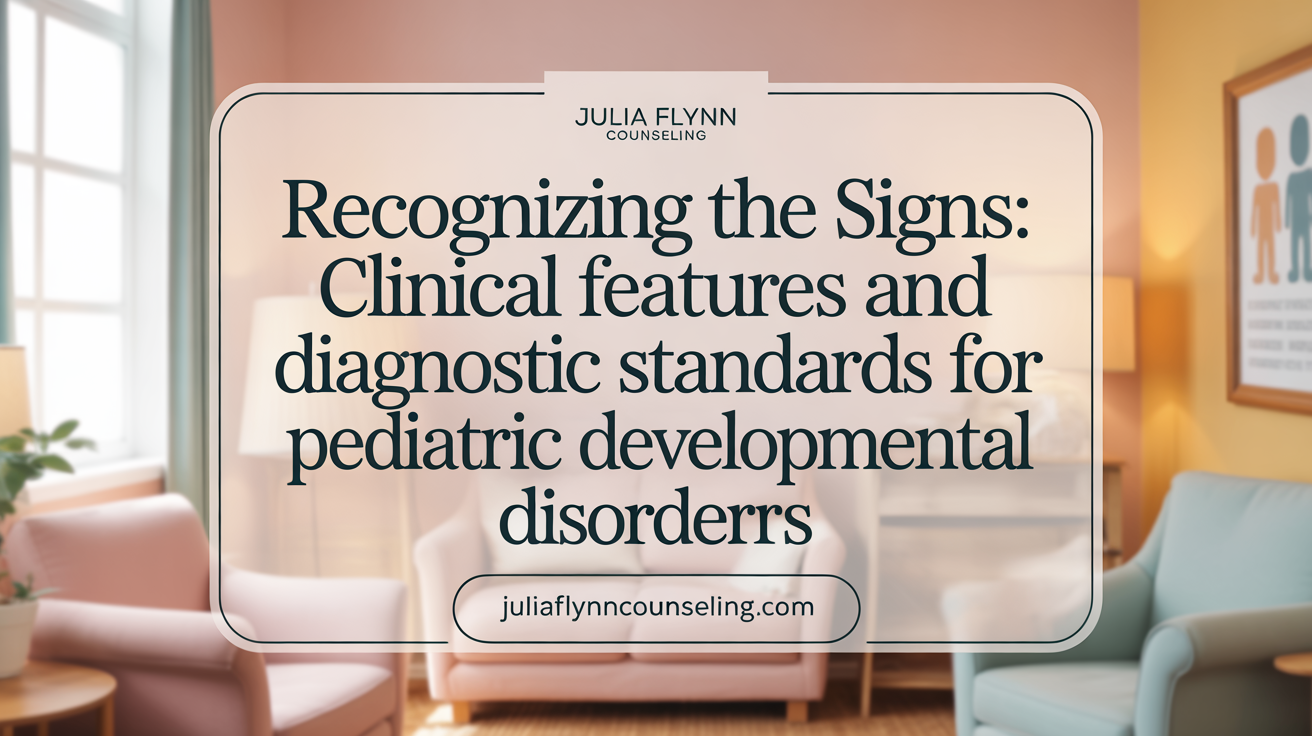Introduction to Recurrent Abdominal Pain in Children
Recurrent abdominal pain (RAP) in children is a common yet complex symptom presenting in pediatric emergency settings. Defined by multiple episodes of abdominal discomfort lasting over months and severe enough to interfere with daily life, RAP poses diagnostic and management challenges. While most cases are functional and benign, a significant minority stems from organic causes requiring timely intervention. This article aims to provide medical professionals, parents, and caregivers with a comprehensive understanding of RAP—to enhance recognition, assessment, and treatment within the pediatric emergency room environment.
Defining Recurrent Abdominal Pain in the Pediatric Population
 Recurrent abdominal pain (RAP) in children is defined as experiencing at least three episodes of abdominal pain over a period of more than three months that significantly impact the child's daily life. These episodes can vary in intensity, location, and duration, but the hallmark is their recurrence and persistence over time.
Recurrent abdominal pain (RAP) in children is defined as experiencing at least three episodes of abdominal pain over a period of more than three months that significantly impact the child's daily life. These episodes can vary in intensity, location, and duration, but the hallmark is their recurrence and persistence over time.
The diagnostic criteria focus on both frequency and duration. Specifically, the pain episodes must occur at least three times and span a minimum of three months. This helps distinguish RAP from isolated or acute episodes of abdominal discomfort, which are common in children and often benign.
RAP can interfere with a child's normal functioning, including school attendance, play, and social activities. It can be disruptive and concerning for both the child and caregivers.
Most cases of RAP are categorized as functional, meaning no identifiable structural or biochemical abnormality is found despite thorough evaluation. This is termed a disorder of gut-brain interaction, previously known as a functional gastrointestinal disorder. Organic causes, such as constipation, gastroesophageal reflux, or infections, are identified in a minority (about 5-10%) of cases.
In summary, RAP signifies recurrent, often unexplained abdominal pain that lasts for several months, affecting children’s daily routines. Accurate diagnosis involves careful history-taking, recognition of symptom patterns, and ruling out significant organic conditions. Management typically includes reassurance, lifestyle modifications, and psychological therapies, with medical treatment reserved for identified organic causes or severe cases.
Clinical Features, Epidemiology, and Diagnostic Criteria of RAP

What are the clinical features and diagnostic criteria for recurrent abdominal pain in children?
Recurrent abdominal pain (RAP) in children presents with episodes of pain occurring over a minimum span of three months. To be classified as RAP, there should be at least three distinct episodes that are severe enough to disrupt daily activities such as school or play. Children often describe the pain as vague, typically around the belly button, and it can be sudden or gradually increase in intensity.
Common associated symptoms include nausea, headache, fatigue, and sometimes behavioral changes related to discomfort. The pain can be episodic or persistent, but it generally does not result from an identifiable organic cause after proper testing. Physical examinations often reveal no abnormal findings, and the child's growth and development typically remain normal.
Diagnostically, clinicians rely on thorough history taking, which notes pain characteristics, duration, frequency, and triggers. A comprehensive physical exam helps identify signs of organic disease, such as weight loss, blood in stool, or abdominal tenderness.
To confirm RAP as primarily functional, healthcare providers follow the Rome IV criteria, which specify that episodes must occur at least three times over three months, with the pain impacting activities. Extensive investigations aim to exclude organic causes like gastrointestinal infections, inflammatory diseases, or structural anomalies.
Overall, recognizing the typical presentation and adhering to diagnostic criteria assist clinicians in managing these cases effectively and avoiding unnecessary tests.
Differential Diagnosis: Organic and Functional Causes of RAP
 Recurrent abdominal pain (RAP) in children can stem from a variety of causes. These include a wide range of organic conditions involving the gastrointestinal, genitourinary, and surgical systems. Common organic causes comprise inflammatory bowel disease (like Crohn's disease or ulcerative colitis), Helicobacter pylori infection, carbohydrate intolerances such as lactose intolerance, and structural abnormalities like Meckel's diverticulum and malrotation. Other conditions may include urinary tract infections, ovarian or testicular torsion, and less commonly, tumors or cysts.
Recurrent abdominal pain (RAP) in children can stem from a variety of causes. These include a wide range of organic conditions involving the gastrointestinal, genitourinary, and surgical systems. Common organic causes comprise inflammatory bowel disease (like Crohn's disease or ulcerative colitis), Helicobacter pylori infection, carbohydrate intolerances such as lactose intolerance, and structural abnormalities like Meckel's diverticulum and malrotation. Other conditions may include urinary tract infections, ovarian or testicular torsion, and less commonly, tumors or cysts.
Despite these possibilities, most RAP cases in children are functional, meaning they lack identifiable structural or biochemical abnormalities. Functional gastrointestinal disorders (DGBIs), including irritable bowel syndrome and functional abdominal pain, are often characterized by heightened gut sensitivity and issues in brain-gut communication. These disorders contribute significantly to RAP cases, especially in school-aged children and adolescents.
Certain surgical emergencies also present with RAP. Examples include recurrent intussusceptions, which may cause intermittent pain, and acute conditions like appendicitis or bowel obstruction that require urgent intervention. Recognizing alarm signs such as worsening pain, blood in stool, persistent vomiting, or weight loss can help identify these urgent cases.
Psychosocial factors may play a role in maintaining or exacerbating pain. Stress, anxiety, depression, past trauma, and family issues are linked to functional pain syndromes. Children with high levels of stress may experience increased gut sensitivity, leading to stronger pain signals.
Effective differentiation relies on taking a comprehensive history and conducting a thorough physical exam. Key questions include the nature, onset, and duration of pain; associated symptoms such as vomiting, blood in stool, or weight loss; and psychosocial context. Diagnostic tests like blood work, stool studies, ultrasound, or endoscopy are employed judiciously. They aim to rule out organic causes when red flags are present but often show normal results in children with functional pain.
In summary, understanding the broad spectrum of potential causes and carefully evaluating symptoms helps guide appropriate management for children with RAP. Most cases are benign and manageable with reassurance, lifestyle changes, and psychological therapies, but recognizing serious organic causes remains crucial.
Recognizing Red Flags: When Abdominal Pain Warrants Urgent Attention

What are the important red flag symptoms for abdominal pain in children that warrant urgent medical evaluation?
Red flags are signs and symptoms that suggest a more serious underlying condition requiring immediate medical attention. In children with abdominal pain, several symptoms and signs should prompt urgent evaluation.
Key alarm symptoms include unexplained weight loss and poor growth, which may indicate chronic infections, malignancies, or inflammatory conditions like Crohn's disease. Persistent fever, especially if high or associated with other symptoms, can suggest infections or systemic inflammatory diseases.
Blood in vomit or stool is a critical red flag that raises concern for gastrointestinal bleeding, tumors, or severe inflammation. Episodes of pain awakening the child from sleep, or pain that worsens over time, are also worrisome signs.
Physical examination findings such as palpable abdominal masses, jaundice, persistent vomiting, signs of dehydration (e.g., dry mouth, sunken eyes, lethargy), and localized tenderness or rebound tenderness are especially indicative of serious conditions like appendicitis, bowel perforation, or obstruction.
Presence of these features warrants prompt assessment, including laboratory tests and imaging, to identify the cause. These red flags can help distinguish benign functional pain from life-threatening or serious organic illnesses that need urgent intervention.
Early recognition and appropriate referral prevent complications and ensure timely treatment. Healthcare providers should maintain a high index of suspicion when these warning signs are present to initiate the necessary investigations rapidly.
Best Practices for Assessment and Diagnosis in the Pediatric Emergency Room

What are the current guidelines and best practices for assessing and managing recurrent abdominal pain in pediatric patients in emergency settings?
Assessing children presenting with recurrent abdominal pain (RAP) in emergency settings requires a careful, systematic approach. Starting with a detailed history is vital, focusing on pain characteristics—such as location, duration, frequency, and severity—and any associated symptoms like vomiting, diarrhea, or bleeding. A thorough physical examination complements this, assessing for signs of serious conditions like abdominal tenderness, rebound, or palpable masses.
Diagnostic tests should be targeted based on clinical suspicion. Laboratory investigations typically include urinalysis and inflammatory markers like ESR or CRP to identify infections or inflammatory causes. Imaging is crucial, with ultrasound being the modality of choice due to its safety profile and effectiveness in detecting conditions like appendicitis, ovarian torsion, and intussusception. Computed tomography (CT) scans are reserved for cases where ultrasound results are inconclusive or when complex pathology is suspected because of the radiation exposure involved.
Clinical prediction tools, such as the Pediatric Appendicitis Score (PAS) and Alvarado score, can assist in risk stratification to determine the need for surgical intervention. However, these tools should not replace clinical judgment but rather complement it.
Ongoing reassessment is essential. Children should be monitored closely, with repeated physical examinations to detect any changes or deterioration. When serious causes are suspected or identified, prompt involvement of surgical or pediatric specialists is necessary.
Overall, the focus remains on accurate early diagnosis, symptom relief, and safe, judicious use of diagnostic resources. Ensuring adequate hydration, providing analgesia, and preparing for potential surgical consultation form core aspects of management.
This comprehensive approach balances the need for thorough evaluation with the principles of safe, resource-conscious medicine, aiming to stabilize the child and prevent missed diagnoses while minimizing unnecessary radiation exposure.
Management and Treatment Strategies for Recurrent Abdominal Pain in Children

What treatment and management strategies are recommended for recurrent abdominal pain in children?
Managing recurrent abdominal pain (RAP) in children begins with reassurance and education, emphasizing that most cases are benign and related to functional issues rather than serious organic disease. Families should be informed about the common causes and the typical course of the condition, which often improves over time.
Initial care focuses on symptomatic relief and lifestyle adjustments. Ensuring adequate hydration, promoting balanced and bland diets, and avoiding known irritants such as caffeine, spicy foods, or excessively fatty meals can help reduce symptoms. Over-the-counter pain relievers like paracetamol or ibuprofen may be used judiciously to alleviate discomfort.
Behavioral and psychological therapies are instrumental, especially for cases linked to stress or emotional factors. Techniques such as cognitive-behavioral therapy (CBT) and hypnotherapy have shown benefit in managing symptoms by addressing stress, anxiety, and pain perception.
When an organic cause is identified—such as infections, inflammatory conditions, or structural anomalies—specific treatments are necessary. For example, eradication of Helicobacter pylori in infected patients or surgical intervention for structural abnormalities like malrotation or Meckel diverticulum.
Medications may be employed when symptoms are severe or refractory to initial measures. These include antispasmodics, muscle relaxants, or neuropathic pain agents, but their use should be tailored to individual cases and guided by specialist advice.
Referral to a multidisciplinary team including pediatric gastroenterologists, psychologists, dietitians, and pain specialists is recommended when pain persists or significantly disrupts the child's daily activities. This teamwork facilitates comprehensive management, addressing physical, psychological, and social factors.
Overall, a holistic approach—combining reassurance, lifestyle modifications, behavioral therapies, targeted medication, and specialist intervention when needed—is the cornerstone of effective RAP management in children.
Psychosocial Influences and the Gut-Brain Axis in Pediatric Abdominal Pain
What role do psychological factors such as stress, anxiety, and family environment play?
Psychological factors are significantly linked to recurrent abdominal pain in children. Stress, anxiety, and family dynamics can influence pain perception, often exacerbating symptoms. Children experiencing family conflicts, bullying, or abuse may report increased abdominal discomfort. Recognizing these factors helps clinicians tailor effective, holistic treatment plans.
How do disorders of gut-brain interaction (DGBIs) contribute to functional abdominal pain?
Disorders of gut-brain interaction, previously known as functional gastrointestinal disorders, are the most common origin of chronic abdominal pain in children. These conditions involve abnormal communication between the brain and gut, leading to heightened pain sensitivity despite normal gastrointestinal structure and function. Emotional distress and psychological factors often act as triggers or amplifiers of these symptoms.
What is the impact on quality of life and why is symptom validation important?
Persistent abdominal pain can interfere with a child's daily activities, including school attendance and social participation, affecting overall quality of life. Validating the child's experience is crucial; it reassures families that the pain is real, alleviating feelings of invalidation or frustration. This validation encourages cooperation with management strategies and reduces unnecessary diagnostic procedures.
Which techniques, including mindfulness, behavioral therapies, and relaxation, are effective?
Effective management includes psychological therapies such as cognitive-behavioral therapy (CBT), hypnotherapy, and mindfulness practices. Relaxation techniques like belly breathing, guided imagery, and biofeedback help children reduce stress and modulate pain perception. Herbal remedies like peppermint oil have also shown some benefits. These approaches address the emotional and physical aspects of pain, often leading to improved outcomes.
What challenges do caregivers face, and why is multidisciplinary support important?
Caring for a child with chronic abdominal pain can be stressful and overwhelming, especially when diagnosis is unclear, and symptoms persist. Caregivers often experience anxiety, depression, and frustration. A multidisciplinary team involving pediatric gastroenterologists, psychologists, dietitians, and physical therapists is essential to provide comprehensive care. Such collaboration ensures that physical, psychological, and social needs are addressed concurrently, improving the child's quality of life.
Conclusion: Enhancing Care for Pediatric Recurrent Abdominal Pain in the ER
Recurrent abdominal pain in children represents a multifaceted challenge within emergency departments, blending clinical uncertainty with significant impacts on child and family well-being. Recognizing the predominance of functional etiologies alongside a mindful approach to identifying organic pathology ensures timely and appropriate care. Comprehensive assessment, attention to red flags, and application of best practice guidelines optimize diagnostic accuracy and patient safety. Equally, integrating psychological understanding and multidisciplinary management strategies fosters improved quality of life and outcomes. Empowering healthcare providers with knowledge and resources equips them to address this prevalent pediatric problem effectively, supporting children’s health and daily functioning in both acute and ongoing contexts.
References
- Recurrent Abdominal Pain in Children - AAFP
- Recurrent abdominal pain in children: a clinical approach - PMC
- Chronic abdominal pain in children and adolescents (Beyond the ...
- Chronic Abdominal Pain | Children's Hospital Colorado
- Abdominal Pain in Children | Boston Children's Hospital
- Chronic Abdominal Pain in Children | American Academy of Pediatrics
- Functional Abdominal Pain in Children - Seattle Children's Hospital
